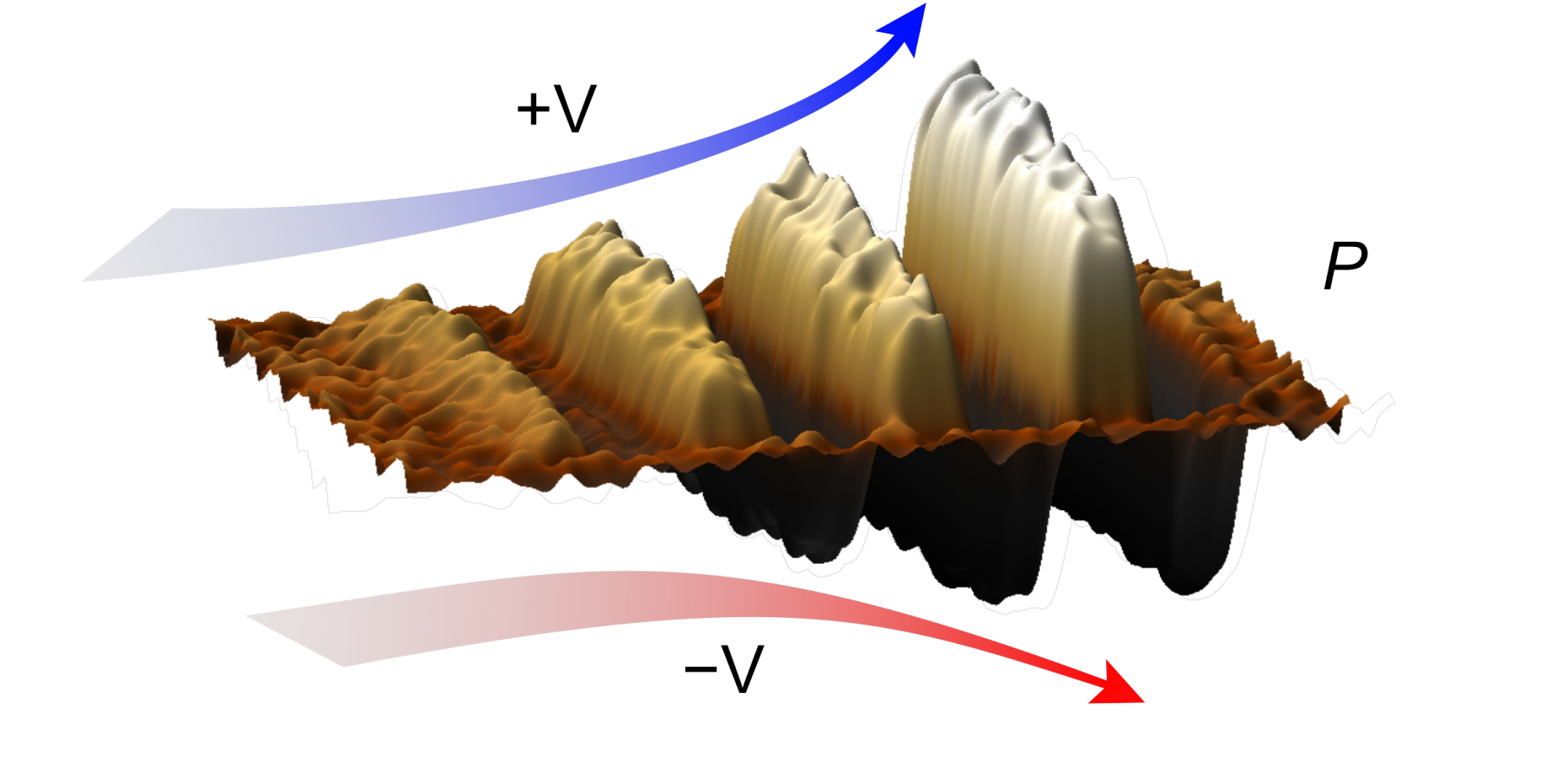Fifty Shades of Electric Polarization
Ferroelectric materials have found widespread use in everyday technology mainly owing to their electric polarization that can be switched between two distinct states. Overcoming the binary limit of ferroelectrics in order to achieve any arbitrary value of the polarization has been a long-standing challenge, but has the potential to vastly expand the scope of ferroelectric applications, for instance towards neuromorphic computing.

Modern electronics is a digital world, where information is generated, stored, and processed in the form of zeros and ones. Thus, to fulfil their function many electronic components rely on materials that are inherently binary. In magnetic hard disks, for instance, information is encoded in the remanent magnetization of a ferromagnet that is defined by the well-known magnetic hysteresis and can take on exactly two distinct values. Magnetic domains in the hard disk, i.e. regions with a uniform magnetization, then constitute memory bits. While binary electronics have undoubtedly led to countless achievements, they are nowadays reaching their fundamental size-related limits. Furthermore, this binary approach has been impractical to mimic analog biological systems – such as the synaptic transmission in the brain – that hold great promise as the basis for highly efficient next-generation neuromorphic electronics.
Focusing on ferroelectrics – materials with a switchable spontaneous electric polarization – researchers from the Laboratory for Multifunctional Ferroic Materials and the Electron Microscopy Center at EMPA have now successfully realized the capacity to set any arbitrary value of the polarization at remanence. They achieved this in thin films of lead zirconate titanate (PbZrxTi1-xO3, in short PZT) – the technologically most relevant ferroelectric material that has found widespread use, for example in pressure sensors or ultrasonic devices because of its piezoelectric properties. To accomplish this continuous switchability of the polarization, the team combined two particular aspects in their design approach. First, they focused on a chemical composition of PZT that lies close to a phase instability, where even small electric fields can induce very large materials responses, such as mechanical deformation. Second, they chose to prepare epitaxial films with a thickness of just a few nanometers, where the strain induced by the underlying single crystalline substrate acts as a handle to control the ferroelectric domain architecture.
Based on this strategy, the researchers prepared the films using an atomically precise pulsed laser deposition system equipped with state of the art in-situ monitoring tools and managed to obtain a domain configuration in the PZT films consisting of randomly arranged nanoscopic (≈10 nm) domains. Surprisingly, they found that the application of an electric field allows reversing the polarization in each domain without changing the nanometric domain size. Because the domains exhibit a broad distribution of switching barriers, it was further possible to switch only a fraction of the domains with one applied voltage value. Thus, by averaging over a handful of domains, they achieved to stabilize any value of the polarization at remanence between depolarized and fully saturated states.
To demonstrate the technological relevance of a continuous nanoscale polarization control, the researchers further performed two proof-of-concept experiments. For their first application, they showed that by spatially controlling the net polarization it is possible to tune the efficiency for optical frequency doubling – second harmonic generation – a property that plays a large role for photonic applications. Second, they demonstrated a quasi-continuous tunability of the tunnel current that flows through the PZT film depending on the net polarization. Beyond offering a non-destructive read-out of the polarization, this manipulation of current flow opens exciting possibilities for the fabrication of artificial synapses.
Multilevel Polarization Switching in Ferroelectric Thin Films, Martin F. Sarott, Marta D. Rossell, Manfred Fiebig, and Morgan Trassin, Nature Communications (2022). external page DOI:10.1038/s41467-022-30823-5
In-situ Monitoring of Epitaxial Ferroelectric Thin-Film Growth, Martin F. Sarott, Elzbieta Gradauskaite, Johanna Nordlander, Nives Strkalj, and Morgan Trassin, Journal of Physics: Condensed Matter (2021). external page DOI:10.1088/1361-648X/abf979
ETH Zurich, Laboratory for Multifunctional Ferroic Materials